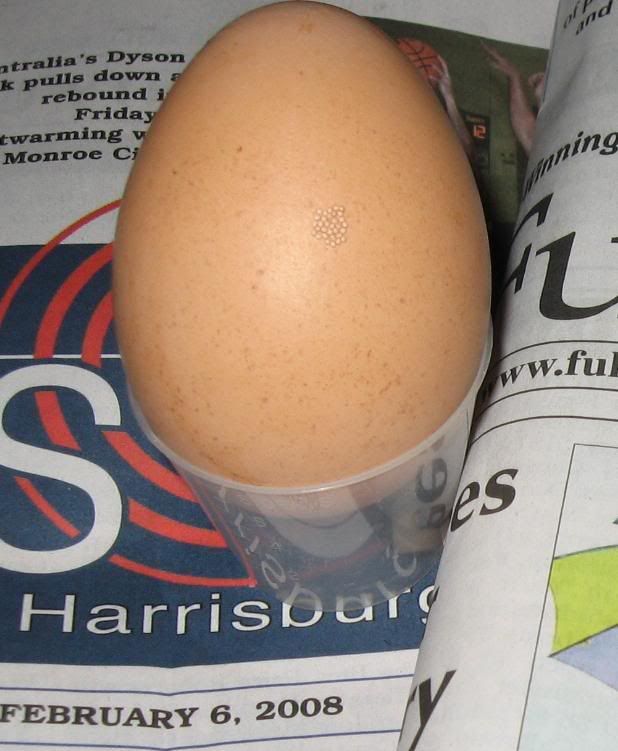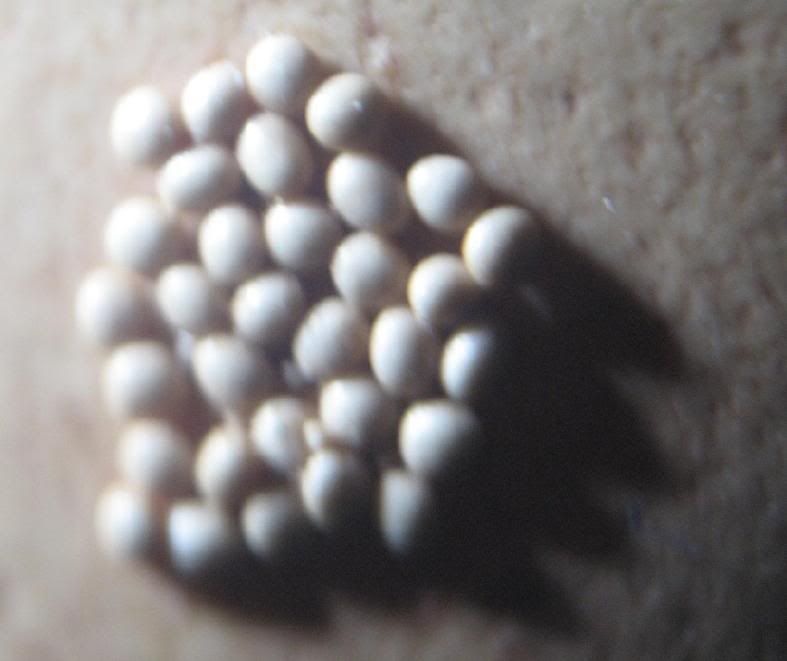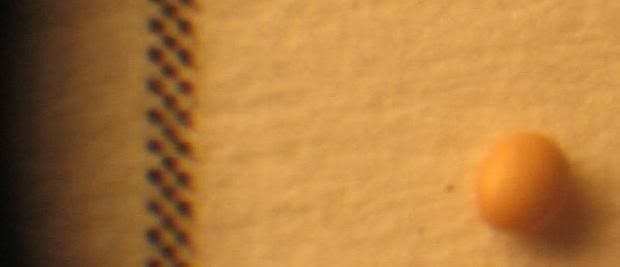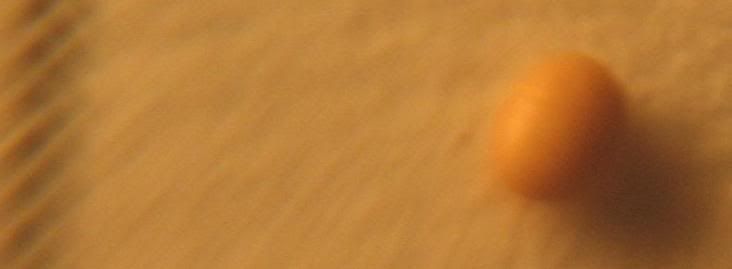We have our hermaphroditic hen (the crowing `spurster') and she's laid a total of three eggs in as many years (all three not much bigger than a thumb nail). So, oddities aren't cause to fret (so far).
Only one BSL girl laid an egg on Wed. Nothing untoward, unusual - just the normal bwaccking and growling (no blood, nothing). The egg appeared to be well within spec. and I didn't give it further thought until Cass asked about an area of `roughness' on the shell. I grabbed a loupe and this is what we observed: Used white LED in second shot to give the `egg' shapes better definition, incandescent on final two shots of a single `egg' for `natural color' - that `hatching' on paper is a solid line on a writing tablet . If you look closely you can see even smaller `egg' shapes `hiding' here and there down between, or attached to. the larger ones.




If this is a common deposition found on our `bioceramics' please bring us up to speed. When the flock goes to roost I'll be back and check in (this one has got me stumped). These `concretions'? were attached tightly to the shell itself. After carefully removing via magnifying headset and dental tools - we placed them in vinegar. They dissolved completly (rules out insects/waste/etc) - some oviduct tissue overactive?
Only one BSL girl laid an egg on Wed. Nothing untoward, unusual - just the normal bwaccking and growling (no blood, nothing). The egg appeared to be well within spec. and I didn't give it further thought until Cass asked about an area of `roughness' on the shell. I grabbed a loupe and this is what we observed: Used white LED in second shot to give the `egg' shapes better definition, incandescent on final two shots of a single `egg' for `natural color' - that `hatching' on paper is a solid line on a writing tablet . If you look closely you can see even smaller `egg' shapes `hiding' here and there down between, or attached to. the larger ones.




If this is a common deposition found on our `bioceramics' please bring us up to speed. When the flock goes to roost I'll be back and check in (this one has got me stumped). These `concretions'? were attached tightly to the shell itself. After carefully removing via magnifying headset and dental tools - we placed them in vinegar. They dissolved completly (rules out insects/waste/etc) - some oviduct tissue overactive?
Last edited:




